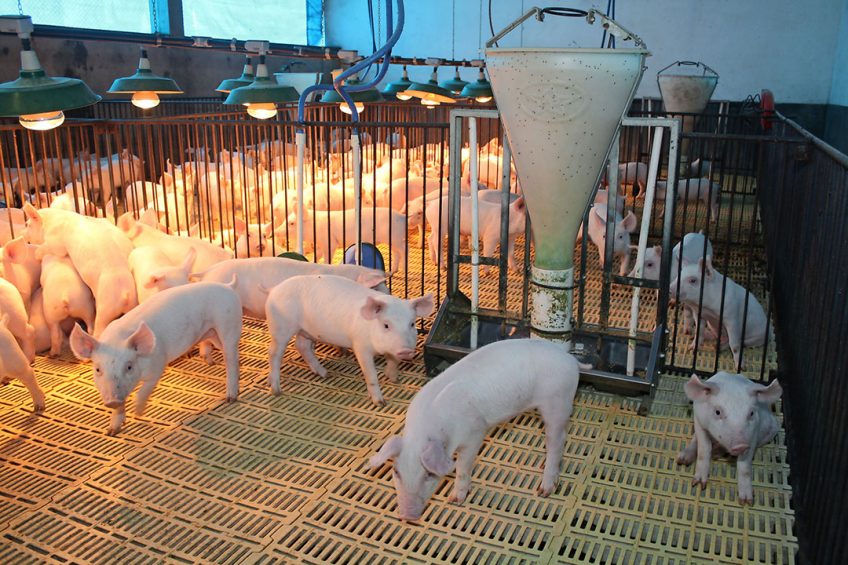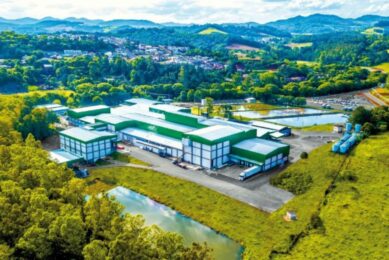Small steps forward for Brazil’s pig industry

How did Brazil’s pig industry develop over the last 10 years? Predominantly, it is a mixed bag of impressions. Certainly, there are steps forward while at the same time the progress could have been a lot stronger.
|
A production growth of 20.1% (to 3.63 million tonnes) and an increase of 22% in exports (to 645,500 tonnes) in one decade – they both sound like major steps. Well, they may, but not when the topic of conversation is Brazil’s pig industry.
Figure 1 shows the development of Brazil’s pig industry over the last decade. These data were published by the Brazilian Animal Protein Association (ABPA), and a closer review shows that the Brazilian pig sector had even more room for improvement. The country must do better to achieve internal economic and social sustainability in the sector and, finally, to deliver on its ‘manifest destiny’ for feeding the world.
Figure 1 – Brazil’s pig production (million tonnes).
Brazil is leading the world trade in terms of poultry and beef, but the country comes 3rd in pork meat, some distance behind both the USA and Canada. The distance has become even greater over the last 10 years. The main issue is missing opportunities to develop the country’s potential.
At the moment, Brazil’s pig industry employs around 130,000 people directly (over 900,000 indirectly). It produced a gross domestic product (GDP) of around to US$ 17 billion in 2017 and has been paying over US$ 5 billion in taxes.
The domestic market
Brazil has a huge domestic potential for pork consumption, with over 208 million inhabitants. They consume 81.5% of the country’s entire production, meaning that the remainder of 18.5% goes abroad. Still, Brazilians prefer other pieces of meat rather than pork.
That proves to be a pattern that is difficult to change. Despite a well-structured campaign to promote pork for 6 years, since 2008 the per capita consumption growth was a mere 7% since 2008. Total per capita pork consumption per year is between 14 and 15kg, with 2018 scoring 14.3kg/year, also see Figure 2.
Should each person just eat 1kg extra per year, it would mean 200,000 tonnes of extra demand or an increase of almost 6% for the entire sector. Similarly, international trade could also provide this much-needed growth, e.g. from Asia, Latin America, Africa or Europe.
Hurdles to achieve sustainability
From time to time, Brazil’s pig sector can be considered a rollercoaster, also see Figure 3. During positive times, roughly once every 5 years, it looks as if farmers can finally advance at full throttle, but there is always something happening that puts an stop to the optimism.
In the field of international trade, Russia is often involved in that process due to embargoes. In 2017, Russians accounted for 40% of Brazil’s entire shipments. One year later, however, trade barriers contributed to a 7% export decrease. A strong effort by Brazilian representatives all around the globe was necessary to prevent an even worse reduction.
The dependence on very few markets is a key problem for Brazil. In spite of e.g. exporting to more than 70 countries in 2017, just Russia, Hong Kong and China accounted for around 70% of all shipments. Over the last 10 years, various very significant markets have opened to Brazilian pork meat, think of China, South Korea and Japan. Currently, Brazil is also negotiating with Mexico, Peru and further opportunities. Specialists recommend, however, that foreign trade promotion needs to improve further.
The criticism focuses on diplomacy e.g. being non-pragmatic, inefficient to remove trade barriers and being in favour of elite producers. Since 2008, US exports have grown from 1.8 million tonnes to 2.8 million tonnes; in the same time frame Canada’s pork exports grew from 1.1 million tonnes to 1.35 million. Brazil, however, ‘only’ grew from 529,000 to 645,000 tonnes.
Bolsonaro administration
Further concerns for pig producers will come from the central administration. On 20 March, Brazil’s new president Jair Bolsonaro visited US president Donald Trump. The 2 presidents announced that Brazil would open its market for US pork, without anything being offered in return.
Another recurrent problem is overproduction, pushing prices down and breaking small producers. If this problem coincides with high soybean and corn prices, the situation is even more dangerous for these smaller producers. Year after year, small producers have to leave their activities in favour of bigger ones.
On top of that, in 2017 another problem surfaced – that of credibility and reliability of Brazil’s inspection system, in a scandal called ‘Carne Fraca’. In spite of it affecting just a tiny amount of the country’s abattoirs (just 21 of 4,800 throughout the country), the entire sector had to work hard to recover its credibility.
The new agricultural minister, Tereza Cristina, announced her intention to create a new model of ‘self-inspection’ for the industry, which will be implemented soon. In other words, companies will become much more responsible for their production and governmental Federal Inspection Service (SIF) will just evaluate final products.

Advances during the last decade
Brazil has made significant steps forward as well over the last 10 years. Improvements are related to efficiency, sanitary status, animal welfare, the sector’s representation and the public perception of pork meat.
Greater meat production with less sows
With regard to efficiency, Brazil’s pig sector housed 15% less sows to produce 25% more meat in 2017 than 10 years prior. That means that each sow has generated 1.85 tonnes of meat in 2017, which is 46.8% more than in 2007 – an impressive improvement.
FMD -free status
With regard to sanitary status, farmers and industry can celebrate the recognition by the World Organisation for Animal Health (OIE) of 17 states as being free from Foot-and-Mouth Disease (FMD) with vaccination and Santa Catarina state, being the main exporter, as even being free from FMD without vaccination. 3 other producer states (Rio Grande do Sul, Paraná and São Paulo) are on the way to achieve that same status soon.
No major disease outbreaks
Additionally, the country has not had any outbreaks of African Swine Fever (ASF), Classical Swine Fever (CSF), Porcine Epidemic Diarrhoea (PED), PRRS, TGE or other critical illness in its major productive regions least since 2007. Brazil, at this moment, can be proud of this sanitary situation.
Isolated CSF outbreaks were reported in 2018 and 2019, but these mainly occurred on small farms in the states Ceará and Piauí, more than 500 km from the Brazilian CSF Free Zone. In addition, just Seneca virus as well as influenza have been detected on Brazilian swine farms but these are not reportable to the OIE.
Welfare: housing
With regard to animal welfare, there is progress to report on. The professional sector has been improving ahead of legislation and some of the main players announced steps towards better animal welfare. For example, the country’s 4 largest pig producing companies, representing over 60% of the Brazilian herd, have publicly committed to phasing out sow crates by 2026. Various, more progressive, farms have also made that switch. They all did this ahead of legislation, which is about to come through. Last year, Brazil’s government launched a public consultation, which will lead to mandatory group housing for gestating sows as well as several other improvements in pig welfare.
Welfare: painful procedures
The ministry’s proposal also includes definitions of production systems, structures, management care, indicators for assessing welfare and farm productivity. In addition, the proposal covers the mitigation of painful procedures such as ear tagging, castration and teeth clipping; euthanasia procedures; the inclusion of enrichment for animals to reduce fights and stress. For all those requirements, the deadline is 20 years from now.
Pig farmers have found their voice
Finally, Brazil’s pig farmers have managed to find better ways to make their voice heard by the establishing of representative bodies. That way, the industry as a whole can be heard in Congress – the industry as well as society. Due to this, legislation improvements came through and an open channel for dialogue has been established both with industry and big retailers. Most importantly as well: pork meat has a better image in the eyes of consumers.


 Brazil at a glance
Brazil at a glance









